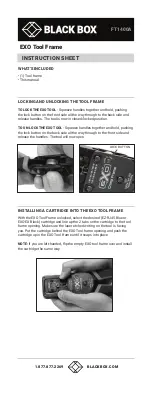
Model S4000CH
57
7.0 Appendix
7.1 Warranty
General Monitors warrants the Model S4000CH to be free from defects in workmanship or
material under normal use and service within two years from the date of shipment.
General Monitors will repair or replace without charge any such equipment found to be
defective during the warranty period. Full determination of the nature of, and responsibility for,
defective or damaged equipment will be made by General Monitors’ personnel.
Defective or damaged equipment must be shipped to the General Monitors plant, or
representative from which the original shipment was made. In all cases, this warranty is limited
to the cost of the equipment supplied by General Monitors. The customer will assume all
liability for the misuse of this equipment by its employees, or other personnel.
All warranties are contingent upon proper use in the application for which the product was
intended and do not cover products which have been modified or repaired without General
Monitors’ approval or which have been subjected to neglect, accident, improper installation or
application, or on which the original identification marks have been removed or altered.
Except for the express warranty stated above, General Monitors disclaims all warranties with
regard to the products sold, including all implied warranties of merchantability and fitness, and
the express warranties stated herein are in lieu of all obligations or liabilities on the part of
General Monitors for damages including, but not limited to, consequential damages arising out
of, or in connection with, the performance of the product.
7.2 Principle of Operation
Many gases and vapors are combustible. General Monitors uses a low temperature catalytic
bead to detect the presence of combustible gases and vapors. The catalytic bead converts the
combustible materials to heat. A change in heat is then converted to a change in resistance,
which can be measured.
Taking a matched pair of catalytic beads and coating one so that it does not respond to the
presence of combustible gases can compare the change in resistance between the two beads.
The bead that is coated is called the reference bead and the other is called the active bead.
Because the beads are a matched pair, they will respond equally to changes in ambient
temperature, humidity, and pressure. This makes the sensor virtually immune to changing
environmental conditions.
By connecting one end of each catalytic bead together, a series circuit is formed. This circuit is
supplied with a constant current. The voltage drop across each of the beads will be identical in
the absence of combustible gases. As combustible material is converted to heat, the resistance
of the active bead increases, causing the voltage drop across each bead to be different. This
difference is proportional to the amount of combustible gas that is present.
The voltage from the sensor is amplified and fed to an Analog to Digital (A/D) converter and
then made available to the microprocessor. The baseline and the gain for the amplifier are set
using digital potentiometers. They are adjusted by the microprocessor during calibration.










































